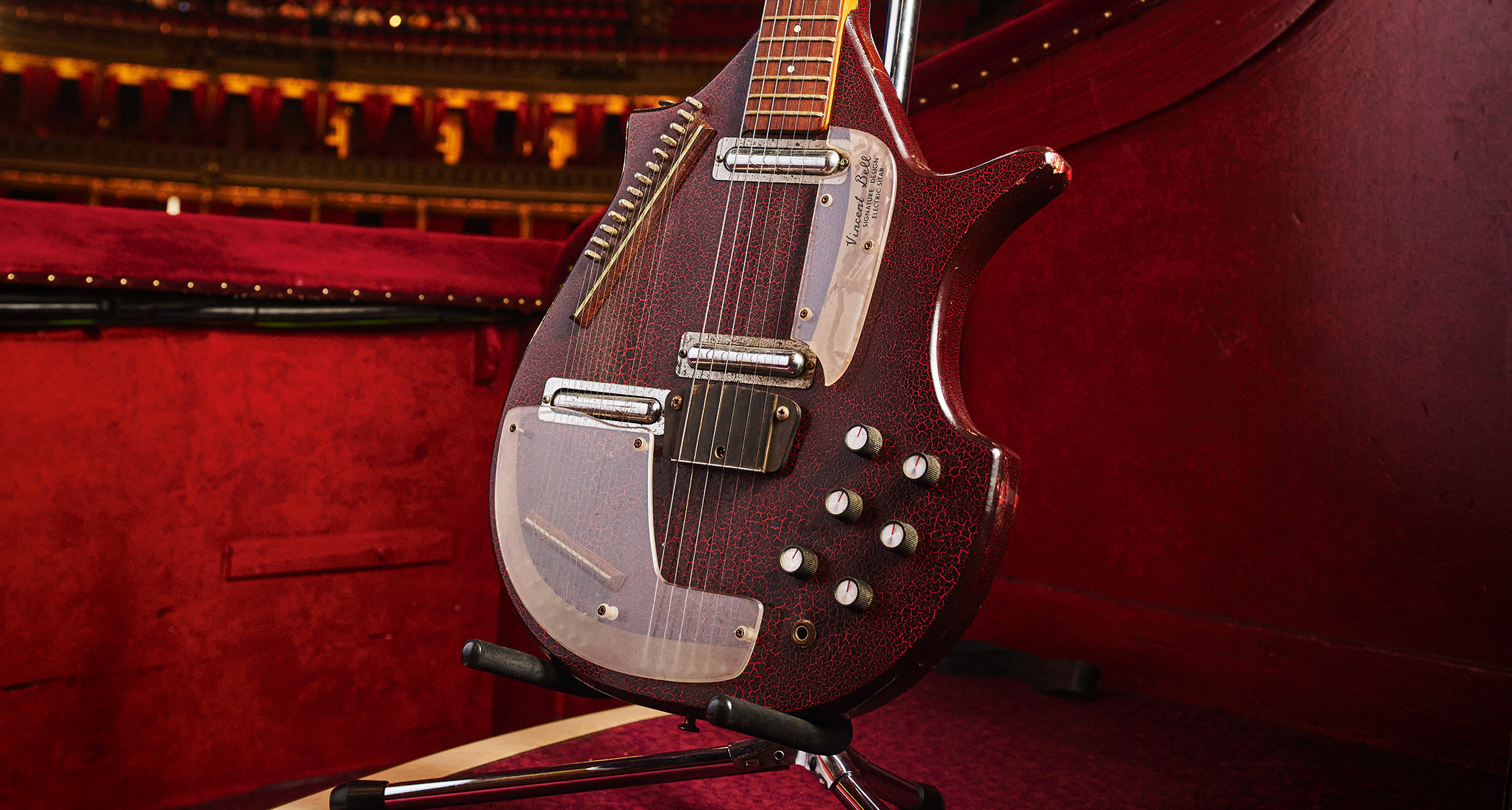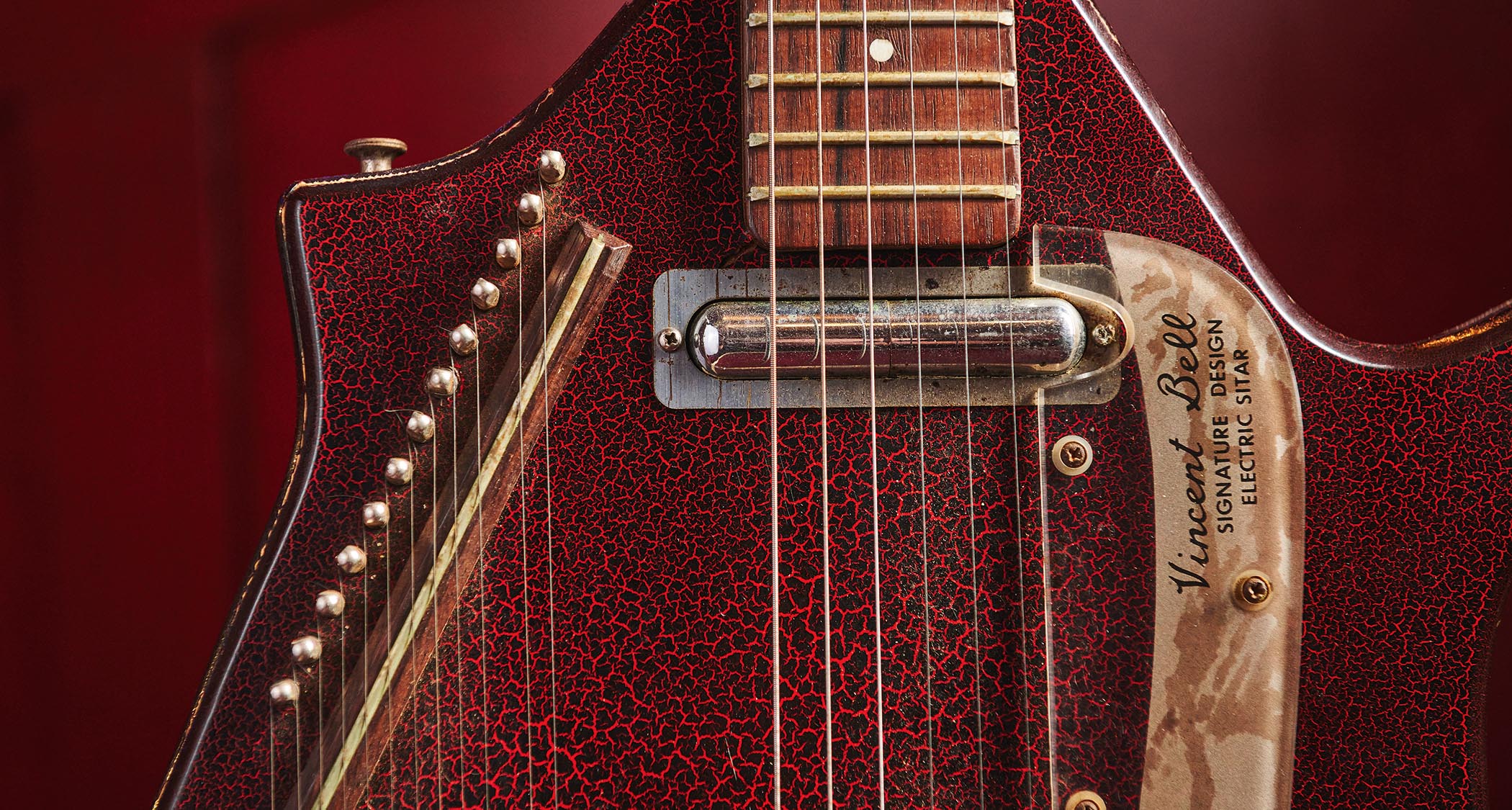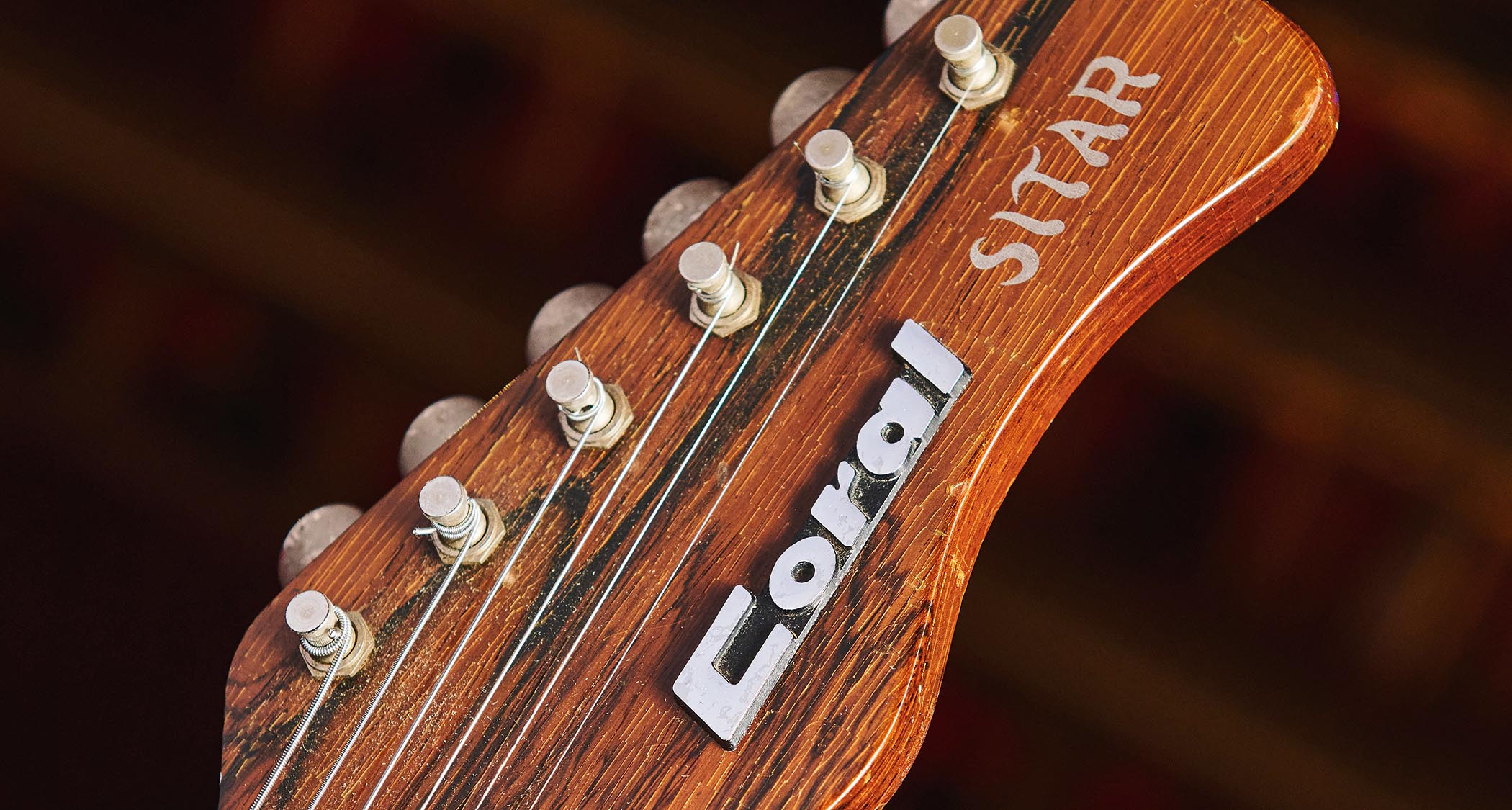“I walked through the ‘Nothing To Declare’ lane, though it was in an embarrassment of a guitar case at that point”: The remarkable story behind Rory Gallagher’s 1968 Coral 3S19 Electric Sitar
Famously used on Philby, the electric sitar is one of the most unique instruments in the Rory Gallagher Collection. Donal Gallagher tells us how he found it and its glam Transatlantic journey home

It’s well known that Rory used an electric Coral Sitar for tracks such as Philby, but less well known is how much his devotion to its atmospheric sound ended up costing.
The 19-string instrument, made by the Danelectro sub-brand Coral in collaboration with session guitarist Vinnie Bell, was surprisingly rare and reputedly only around 50 were ever made, many of which were already owned by well-known players such as Pete Townshend. So Rory simply hired one for touring. But, being a scarce item, doing so cost him an arm and a leg.
“I’d got to the point of frustration with touring costs and budgets,” Donal Gallagher recalls, adding that he tried to find Rory a Coral Sitar he could buy and so do away with hire costs.
To Donal’s further chagrin, a seemingly perfect example that he found for sale on tour in Australia was rejected by Rory, leaving him back at square one, paying the sitar bills. However, Donal eventually spotted another one for sale for $1,500 in New York.

Taking matters into his own hands, he decided to buy it on a business trip and bring it back for Rory. Little did he know that the Coral Sitar would once again end up costing dear.
Donal takes up the story: “I had to make a short trip out to the States as we were negotiating a new record deal with Mercury Records at the time,” he says. “I had an accountant and a lawyer with me so that the deal could be done within a week – it was quite a pressure. But I took the time then to look up one of the guitar traders out in New Jersey who had a Coral Sitar listed on its sales pamphlet, and picked it up.
“On the last night before we were flying back, the accountant and the lawyer said, ‘Oh, as it happens, Cliff Richard’s in town tonight doing a gig. Would you like to go along with us?”’ And I said, ‘Oh, that’s great.’ I hadn’t seen Cliff, and it was unusual to see him in New York, because he wasn’t so big in America.
Get The Pick Newsletter
All the latest guitar news, interviews, lessons, reviews, deals and more, direct to your inbox!
“So it was a lovely theatre and a great gig and I had a quick chat with Cliff after the show. He told me he was going back to London the next day and asked me when I was heading back, so I said, ‘Well, we’re booked to fly back in the morning at 10 o’clock.’ And he said, ‘Oh, I’m on the 10 o’clock as well. See you on board.’”

“Well, it turned out he was on the 10 o’clock Concorde. However, we had been given seats in first class by the record company. So I got to the airport and said to the guy at check-in, ‘The 10 o’clock is Concorde, isn’t it?’ ‘No, no, no,’ he replied. ‘It’s a different flight – but they go out at the same time.’ And I said, ‘Well, what’s the cost to change and go on Concorde?’
“Because it was due to be taken out of service, even then, and I wanted to fly on it at least once. So he said, ‘Would that be cash or charge?’ and I said, ‘Cash, if it’s the right price’ [laughs]. So in a New York fashion, I gave the guy cash and so the next thing we’re on.
“So the sitar came back on Concorde, and then everyone sort of got their baggage at Heathrow. Cliff had an impressive entourage with him and the two guys I was with both had a suit and tie on. So I decided that I’d walk through the ‘Nothing To Declare’ lane with them, though the sitar was in an embarrassment of a guitar case at that point.”
“Anyway, I got the nod and was pulled over by the customs inspector. I said something like, ‘Well, I’m just bringing it back from my brother. I’m not a player. It’s something that was picked up in New York for him as a gift.’ And the guy says, ‘Oh, well these things can be worth a lot.’ So I was going, ‘Are you serious?’
“And he said, ‘Well, you have to pay something for it [in import tax]. Hang on there a minute.’ And he went off and came back with a manual. Not only that, within the manual, he had the pamphlet from the guitar trader that I bought the Coral Sitar from in America with the price on!
“So it became an even more expensive guitar – but worth every penny and I paid the charge to Customs.”
- The Rory Gallagher Collection will be auctioned at Bonhams in New Bond Street, London, on 17 October 2024.
Jamie Dickson is Editor-in-Chief of Guitarist magazine, Britain's best-selling and longest-running monthly for guitar players. He started his career at the Daily Telegraph in London, where his first assignment was interviewing blue-eyed soul legend Robert Palmer, going on to become a full-time author on music, writing for benchmark references such as 1001 Albums You Must Hear Before You Die and Dorling Kindersley's How To Play Guitar Step By Step. He joined Guitarist in 2011 and since then it has been his privilege to interview everyone from B.B. King to St. Vincent for Guitarist's readers, while sharing insights into scores of historic guitars, from Rory Gallagher's '61 Strat to the first Martin D-28 ever made.
“I didn’t think anybody would believe I got it from George Harrison. I figured they’d call me a liar”: Vintage guitar guru Norman Harris names the 5 most memorable guitars that have come through Norman's Rare Guitars
“What blew me away was that everyone wanted the curly maple top. People were calling, saying, ‘I’ve got to have the bird inlays’”: Paul Reed Smith on raising the Standard 24, finally cracking the noise-free guitar and why John Sykes is a tone hero





![[from left] George Harrison with his Gretsch Country Gentleman, Norman Harris of Norman's Rare Guitars holds a gold-top Les Paul, John Fogerty with his legendary 1969 Rickenbacker](https://cdn.mos.cms.futurecdn.net/TuH3nuhn9etqjdn5sy4ntW.jpg)





